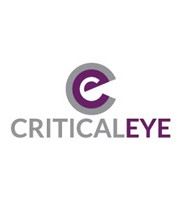
It’s the responsibility of the Human Resources Director to push a CEO into thinking about leadership capability within an organisation. While there may be operational fires to fight and short-term targets to hit, a chief executive must set aside time to reflect on whether the mix of skills in a business is right for the strategy.
Attendees at Criticaleye’s fourth Human Resources Director Retreat, held in association with Legal & General Investment Management (LGIM), agreed that if a CEO is genuine about achieving long-term success, they must identify and develop leaders as a priority.
Andy Clarke, former CEO at Asda, told the audience that when he first stepped into the hot seat he prioritised staff development. “We needed new thinking and diversity, yet still had to develop a strong core of talent from within,” he said.
“I was also extremely mindful of the lack of diversity, so I managed to build a leadership team that was 50 per cent female. The level of debate differed – and I’m not just saying that.”
However, when two of those females were promoted, Andy realised there wasn’t a strong enough pipeline to continue that diversity. As a result, he spent a fifth of his time identifying and developing individuals both internally and externally.
“I did that in conjunction with the HR Director and it was impactful; we were a combined team,” he continued. “At the end of my tenure there was a much greater number of people coming up from within the company.”
Devyani Vaishampayan, Group HR Director at BSI, described how she is concentrating on the talent agenda as the assurance and compliance solutions company looks to double in size over the next two to three years: “The focus of the past was on operational execution – it’s why the leadership team has been successful – but we know we need more strategic skills within the business.”
She then advised: “You need to drive through a message to focus on the gaps that you see in regards to the forward strategy.”
The knock-on effect
As HR Director at Equiniti, Nicky Pattimore is also engaged in developing internal talent within the technology and investment services company. It floated in 2015 and the current leadership team are locked in with equity until October 2018.
“The board are now looking at future succession and we recognise that they can’t all be external appointments,” Nicky explains, noting that several people within the organisation have been identified as possessing senior leadership potential.
This ‘leadership group’ is expected to spend a quarter to a fifth of their time on some of Equiniti’s biggest projects, collaborating with those on the graduate and ‘rising stars’ programmes. “While this group work on these challenges, they must also look at their teams and use them to fill the gaps created when they step out of the day job,” she added.
During the course of the discussions, Charlie Wagstaff, Managing Director at Criticaleye, emphasised the importance of alignment between the CEO and HRD on this issue. “The HR director needs a comprehensive view of the capability within the organisation and how individuals can be upskilled for the future. To think only about the here and now, rather than the next phase of a business, is a mistake,” he said.
CEOs and senior executives have a responsibility to constantly improve their skills and knowledge, while also empowering and developing those around them. Benny Higgins, CEO at Tesco Bank. He noted: “The beating heart of any business is its people; they are the responsibility of everyone, not just the HR director.”
Matthew Dearden, former President for Europe at Clear Channel, built on this point and said: “Unleashing human potential is an inherent leadership responsibility. You can’t delegate or outsource that – although, you should look to the HR director for support.”
Problems occur when executives are overly egotistical, or become complacent because of success. “If you think you’re perfect, you’re done, because you’re doomed to never be better than you are today,” Matthew commented. “You need to embrace being imperfect and be honest with your colleagues, so you can support each other.”
Although it may take time, you should build people up to follow your lead and, eventually, take the baton from you. “You need to cherish, rather than worry about the fact that people are fine without you – that’s a sign that you’re building a good team and organisation,” Matthew concluded.
These views were shared at Criticaleye’s fourth Human Resources Director Retreat, in association with Legal & General Investment Management (LGIM).
By Dawn Murden, Editor, Advisory









